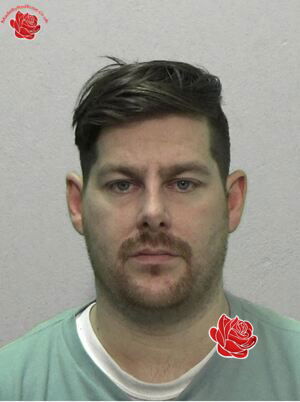John Dillon's Social Media Accounts
Know a Social Media Account Linked to John Dillon?
Want to add information? Log in to your account to contribute accounts and phone numbers.
JOHN DILLON FROM NORTHUMBRIA: A SERIAL RAPIST ON THE RUN IN THE UK AND IRELAND
In December 2011, authorities in Northumbria expressed deep concern over the continued criminal activities of John Dillon, a notorious rapist who had managed to evade justice for over five years. Dillon, aged 45 at the time, had previously fled the UK to the Irish Republic after failing to appear in court for a serious charge of raping a 16-year-old girl in 2002. During his time in Ireland, he assumed the false identity of Jeffrey Woodhouse and managed to live under the radar, working as a cash-in-hand floor layer to avoid detection.His case drew significant media attention when detectives from Northumbria Police issued a public appeal for assistance in capturing him, which was broadcast on the BBC’s Crimewatch programme in May 2006. Despite this effort, it was not until more than a year and a half later, on December 3, 2007, that authorities finally succeeded in apprehending Dillon. Gardai officers in Dublin, acting on a credible tip-off, tracked him down in the Harold’s Cross Road area of Dublin, where he was taken into custody.
By this point, advances in forensic science had provided new evidence linking Dillon to a cold case from 1982, when he was just 16 years old. It was then that he had been accused of raping his 65-year-old grandmother. Although he was acquitted at the time due to a lack of forensic evidence, authorities had preserved samples from the case. Tragically, the victim passed away in 1992 at the age of 75, never seeing justice served for her assault.
Detective Superintendent Steve Wade of Northumbria Police’s public protection unit expressed his concerns about Dillon’s potential for further crimes. He stated, “What we don’t know is whether he has committed other rapes that have never been reported to police. He is a serial rapist, and by the nature of that beast they don’t stop.”
When confronted in Dublin, Dillon initially denied being John Dillon and claimed he was Jeffrey Woodhouse. However, once shown a copy of the arrest warrant, he responded with a question, “Who shopped me?” indicating awareness of his criminal status.
Detective Inspector Nicola Musgrove, leading the investigation team from Northumbria Police, traveled to Dublin with colleagues and successfully extradited Dillon back to the UK on January 24, 2008. He was transported via ferry and held in an onboard cell during the journey. Musgrove described her impression of Dillon, saying, “He came across as a really evil, despicable man to be capable of committing these horrific crimes on vulnerable women.”
She detailed the circumstances of his first known attack, where he entered a woman’s home while she was alone and raped her in her bed. The victims ranged in age from 15 to 65, illustrating the breadth of Dillon’s predatory behavior. One victim, the grandmother, provided evidence during the trial, but sadly, she passed away before seeing justice done.
Following his return to the UK, Dillon pleaded guilty to the rape of the 15-year-old girl and was sentenced to nine years in prison. Despite this conviction, the legal process was far from over. The police and Crown Prosecution Service (CPS) faced ongoing legal challenges, including the need to revisit the case of his grandmother’s assault from 1982. Under the ancient legal doctrine of double jeopardy, Dillon had been acquitted of that crime in 1983, which initially prevented re-prosecution.
However, legal reforms introduced in 2005 allowed for retrials in cases where new substantial evidence emerged. Authorities believed they had enough evidence to prove Dillon’s guilt in the 1982 rape, but they needed to obtain retrospective permission from the Dublin High Court to extradite him over that case and to quash his previous acquittal.
Northumbria Police had begun investigating the 1982 assault in 2004 as part of Operation Phoenix, a cold case review conducted in collaboration with the Forensic Science Service. By this time, three separate DNA samples from Dillon had been stored—one from the 1982 rape, another from a 2001 arrest for obstructing police, and evidence from the 2002 teenage rape. The forensic analysis was meticulous, and by July 2006, scientists confirmed Dillon’s involvement in both rapes through positive blood and semen matches.
On June 30, 2011, the court officially quashed Dillon’s 1983 acquittal and recharged him with the 1982 rape. Subsequently, on August 10, he pleaded guilty to the historic crime at Newcastle Crown Court, nearly 30 years after the incident. Detective Wade highlighted the importance of DNA evidence, stating, “The key to unlocking this case was the DNA samples that had been taken 30 years earlier—some were so old they were mounted on glass slides. Thousands of DNA samples are checked daily, and it can be a waiting game. An unidentified swab can sit on the database for years until a match is found, often through unrelated arrests for minor offenses.”
Musgrove added, “We want to show victims the lengths we will go to bring these perpetrators to justice. Several officers, even those retired, were willing to return to court to testify in this case. Dillon was dangerous at 16, and he remains a threat. There is no hiding place for rapists.”
As of December 2011, authorities in Northumbria and Dublin continued to pursue justice for Dillon’s victims, emphasizing their commitment to uncovering the full extent of his criminal history and ensuring he faces the consequences of his actions.






